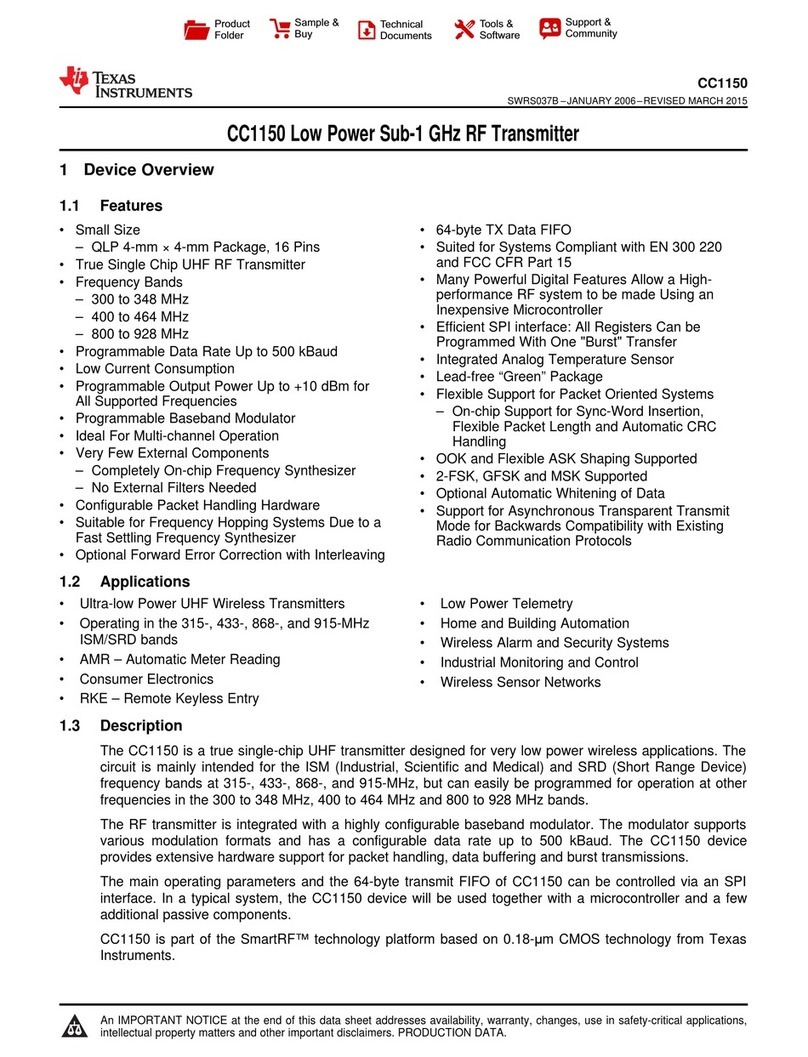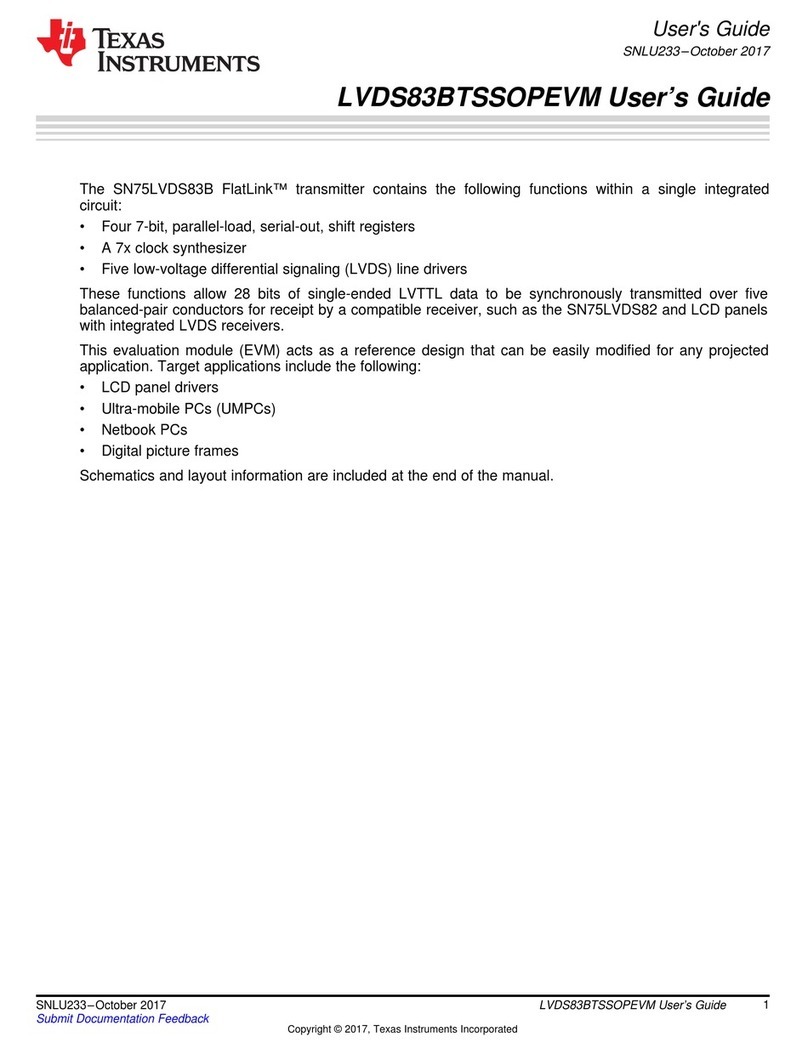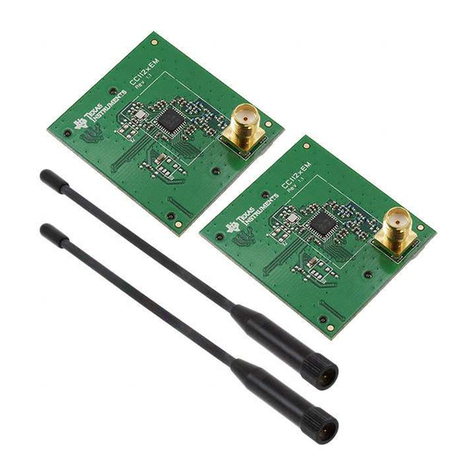
CC1070
SWRS043A Page 6 of 54
4.1 RF Transmit Section
Parameter
Min. Typ. Max. Unit Condition / Note
Transmit data rate
0.45
153.6 kBaud The data rate is programmable.
See section 10 on page 22 for
details.
NRZ or Manchester encoding can
be used. 153.6 kBaud equals
153.6 kbps using NRZ coding
and 76.8 kbps using Manchester
coding. See section 9.2 on page
20 for details.
Binary FSK frequency separation
0
0
108
216
kHz
kHz
in 402 - 470 MHz range
in 804 - 940 MHz range
108/216 kHz is the maximum
separation at 1.84 MHz reference
frequency. Larger separations
can be achieved at higher
reference frequencies.
Output power
433 MHz
868 MHz
-20 to +10
-20 to +8
dBm
dBm
Delivered to 50 Ωsingle-ended
load. The output power is
programmable and should not be
programmed to exceed +10/+8
dBm at 433/868 MHz under any
operating conditions. See section
13 on page 26 for details.
Output power tolerance
-4
+3
dB
dB
At maximum output power
At 2.3 V, +105oC
At 3.6 V, -40oC
Harmonics, radiated CW
2nd harmonic, 433 MHz, +10 dBm
3rd harmonic, 433 MHz, +10 dBm
2nd harmonic, 868 MHz, +8 dBm
3rd harmonic, 868 MHz, +8 dBm
-50
-60
-50
-57
dBc
dBc
dBc
dBc
Harmonics are measured as
EIRP values according to EN 300
220. The antenna (SMAFF-433
and SMAFF-868 from R.W.
Badland) plays a part in
attenuating the harmonics.
Adjacent channel power (GFSK)
12.5 kHz channel spacing, 433 MHz
25 kHz channel spacing, 868 MHz
-47
-50
dBc
dBc
For 12.5 kHz channel spacing
ACP is measured in a ±4.25 kHz
bandwidth at ±12.5 kHz offset.
Modulation: 2.4 kBaud NRZ PN9
sequence, ±2.025 kHz frequency
deviation.
For 25 kHz channel spacing ACP
is measured in a ±8.5 kHz
bandwidth at ±25 kHz offset.
Modulation: 4.8 kBaud NRZ PN9
sequence, ±2.475 kHz frequency
deviation.
Occupied bandwidth (99.5%,GFSK)
12.5 kHz channel spacing, 433 MHz
25 kHz channel spacing, 868 MHz
7
10
kHz
kHz
Bandwidth for 99.5% of total
average power.
Modulation for 12.5 channel
spacing: 2.4 kBaud NRZ PN9
sequence, ±2.025 kHz frequency
deviation.
Modulation for 25 kHz channel
spacing: 4.8 kBaud NRZ PN9
sequence, ±2.475 kHz frequency
deviation.






























